Explore ‘Edakkal Caves’ The Oldest Stone Age Carvings In India In 2025

The Edakkal Caves are a treasure trove of history, art, and mystery, nestled in the scenic hills of Wayanad in Kerala, India. These ancient caves, perched 1,200 meters above sea level on Ambukuthi Mala, are not just a geological wonder but also an archaeological marvel. Carved into the rocky cliffs, the caves are adorned with intricate petroglyphs that date back to the Neolithic era, offering a rare glimpse into the lives and imaginations of our distant ancestors. As you step into the cool, shadowy depths of the Edakkal Caves, you are transported back thousands of years, walking in the footsteps of prehistoric humans. This article will delve into the fascinating history, the remarkable art, and the breathtaking natural beauty of the Edakkal Caves.
About Edakkal Caves
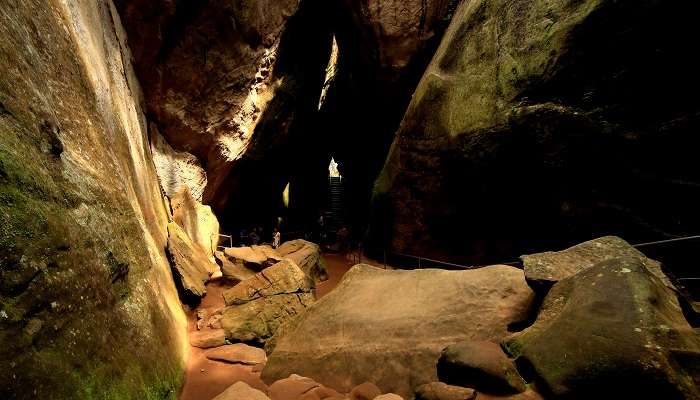
The Edakkal caves, nestled in a remote area of Edakkal, lie 25 km (15.5 mi) from Kalpetta in Kerala’s Wayanad district, perched 1,200 m (3,900 ft) above sea level on Ambukutty Mala. These caves are situated along an ancient trade route linking the high mountains of Mysore with the ports of the Malabar Coast.
These caves date back to at least 6,000 BCE and contain remarkable pictorial writings attributed to Neolithic humans, providing evidence of a prehistoric settlement in the region. The Stone Age carvings found in Edakkal are exceedingly rare and represent the sole known examples of Neolithic pictorial writings in South India, alongside those discovered in Shenthurini, Kollam, and Kerala. The cave paintings in the Shenthurini forests date back to the Mesolithic era, marking another significant archaeological find in the region.
Must Read: Puliyarmala Jain Temple
History Of Edakkal Caves
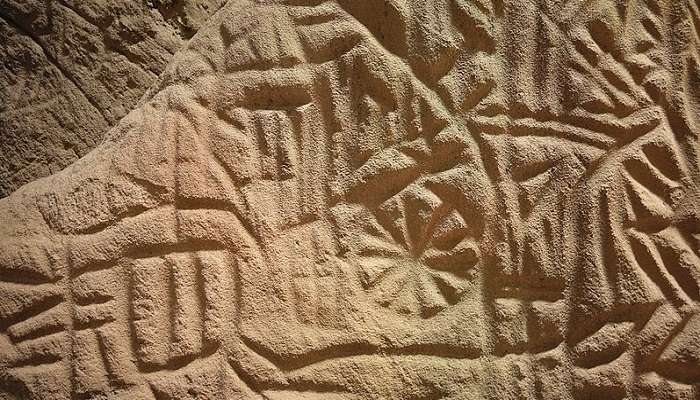
The Edakkal Caves in Kerala are renowned for their ancient history dating back millennia. Local folklore attributes the formation of these caves to Lord Rama’s arrow, but they are more likely a natural occurrence—a massive boulder nestled between two others. Discovered in 1890 by Fred Fawcett, a police superintendent on a hunting expedition, the caves revealed a treasure trove of prehistoric art. The cave walls are adorned with petroglyphs—etchings and pictorial drawings believed to be up to 8,000 years old. These markings depict animals, tools, human figures, and scripts, offering valuable insights into the lives of Neolithic and Mesolithic peoples who once inhabited the caves.
Beyond their artistic significance, the Edakkal Caves’ proximity to an ancient trade route suggests their strategic importance in ancient times. Excavations near the caves, known as Muniyaras, have uncovered ancient pottery, adding another dimension to the historical narrative of the area. In essence, the Edakkal Caves serve as a testament to the early human presence in the region, providing a glimpse into their artistic expressions, tools, and daily lives.
Architecture Of The Petroglyphs at Edakkal Caves
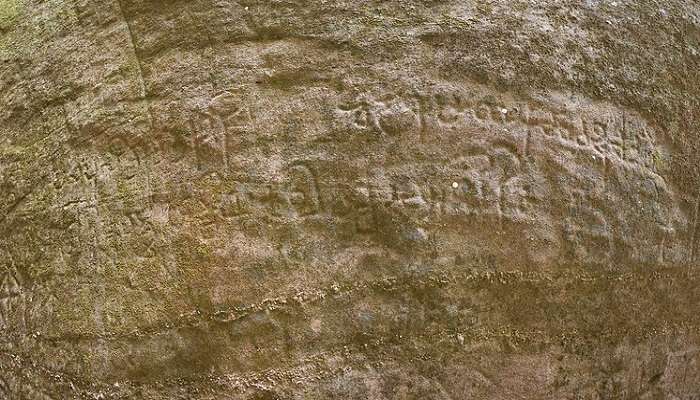
These formations are not typical caves but rather fissures, rifts, or rock shelters measuring approximately 96 feet (29 meters) in length and 22 feet (6.7 meters) in width, with a depth of about 30 feet (9.1 meters). The fissure was created when a large rock split away from the main body, leaving a sheltered space behind. One side of this aperture is covered by a massive rock weighing several tons, forming a natural ‘roof’ over the shelter. Intricate petroglyphs can be found inside this unique rock formation, known as Edakkal caves. These carvings depict human and animal figures, tools used by early humans, and various symbols that have yet to be fully deciphered. They suggest the presence of a prehistoric settlement and provide a glimpse into the ancient culture and practices of the region.
The petroglyphs within the cave date back to at least 8,000 years ago, indicating that the Edakkal caves were inhabited multiple times throughout history. This historical richness was first recognised by Fred Fawcett, a police official from the former Malabar state, who discovered the caves in 1890. His publication about the discovery drew the attention of scholars and sparked interest in the anthropological and historical significance of the site. Locally known as “Ampukuthy Mala,” the cave is also steeped in mythological significance. According to local legend, it is believed that Rama’s sons, Lava and Kusha, created the cave by striking arrows into the mountain, adding a layer of cultural and religious importance to its narrative.
Suggested Read: Places To Visit In Mananthavady
Edakkal Caves Timings, Fees, And Best Time To Visit
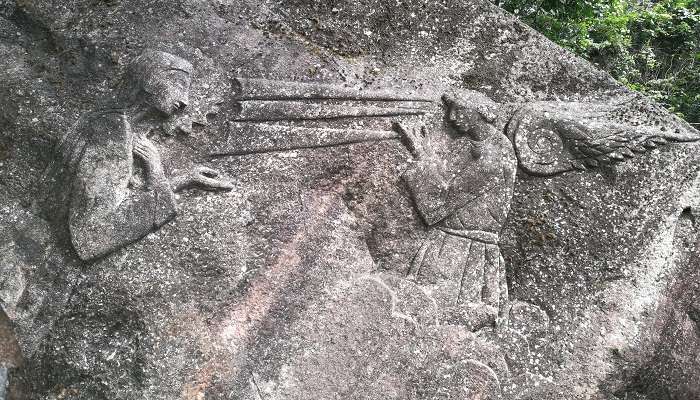
The Edakkal Caves in Kerala are open to visitors from 9:30 AM to 4:30 PM daily. The best time to explore this historical site and marvel at its enigmatic petroglyphs is from November to March when the weather is pleasant and conducive to sightseeing. During these months, visitors can enjoy the pristine natural beauty surrounding the caves and delve into the ancient artworks etched on the cave walls.
Indians are charged INR 20 for entry, while foreigners pay INR 40. Additionally, there are fees for photography equipment: INR 25 for a still camera and INR 100 for a camcorder. If visitors prefer, they can also opt for a jeep ride, which costs INR 70 per person for a group of eight. These fees ensure that visitors can experience and capture the historical and natural wonders of Edakkal Caves comfortably and responsibly.
How To Reach The Edakkal Caves?
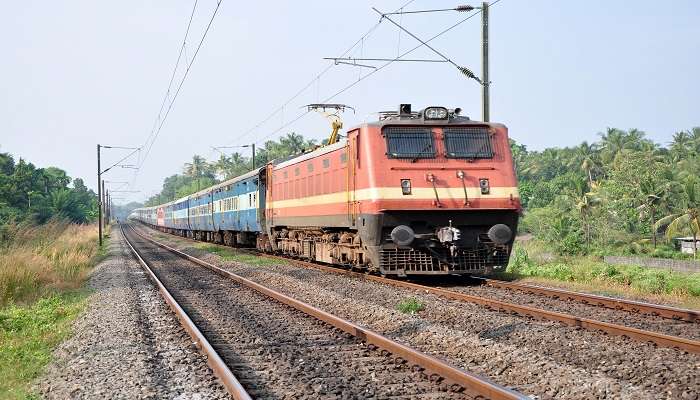
The Edakkal Caves are easily accessible from Wayanad, the nearest major city, which is just 25 kilometres away. Whether you prefer to travel by road, rail, or air, Wayanad is a convenient starting point.
By Road
This is the most common way to reach the Edakkal Caves. You can hire a taxi or cab from Wayanad or take a bus.
- If you are hiring a taxi or cab, the ride from Wayanad to the caves should take about 30 minutes. The caves are off NH 766, so ask your driver for directions.
- If you are taking a bus, you can catch one from the Kalpetta bus station in Wayanad. Buses heading towards Sultan Bathery or Ambalavayal will typically pass by the turnoff for the caves. From the bus stop, you can walk or take a rickshaw to the starting point of the trek.
By Rail
If you choose to travel by rail, the nearest railway station to the Edakkal Caves is Kozhikode Railway Station (CLT), also known as Calicut Railway Station. From here, a taxi or cab will take you on a scenic 100-kilometer journey to the caves. The train ride from major cities like Mysore or Bangalore to Calicut can take around 2.5 to 3 hours, offering a comfortable and enjoyable travel experience.
By Air
The nearest airport to the Edakkal Caves is Calicut International Airport (CCJ), also known as Karipur International Airport. Karipur Airport is also about 106 kilometres from the caves, so you must hire a taxi or cab to get there. Similarly to the train, flying from major cities like Bangalore to Calicut can take around 3 hours.
Further Read: Wayanad Heritage Museum
The Edakkal Caves in Kerala provide a captivating look into ancient human history. Inside the caves, you’ll find ancient rock art, and when you exit, you’ll be treated to breathtaking views of the Western Ghats. It’s a unique experience that gives you a greater understanding of our ancestors’ enigmatic stories. Kerala is a treasure trove of natural beauty and historical wonders. The Edakkal Caves, in particular, offer a fascinating glimpse into ancient human history through rock art. Book your trip to Kerala today and immerse yourself in the enchanting blend of culture, history, and natural beauty this incredible state offers.
For our editorial codes of conduct and copyright disclaimer, please click here.
Cover Image Credit: Asif K Karim for Wikimedia Commons
Frequently Asked Questions About Edakkal Caves
What is special about Edakkal Caves?
These natural caves, situated 1,200 meters (3,900 feet) above sea level on Ambukutty Mala, hold a unique historical significance. Ancient pictorial writings dating back to at least 6,000 BCE are preserved inside the caves. These Stone Age carvings provide a glimpse into prehistoric life and culture, making Edakkal Caves an essential archaeological site in South India.
What is the ticket price of Edakkal Caves?
The entry fee for Edakkal Caves is quite reasonable. As of June 2024, the ticket cost is around ₹50 for Indian tourists and ₹60 for foreign tourists. There are additional charges for cameras and an optional Jeep shuttle service to reach the ticket counter from the parking area.
What time can we go to Edakkal Caves?
The Edakkal Caves are open for visits daily, except Mondays and public holidays, from 9:30 AM to 4:30 PM. It's best to check before you go, especially during the monsoon season (June to September) when heavy rain might cause closures for safety reasons.
Is Edakkal Caves difficult to climb?
Reaching the Edakkal Caves does involve a trek and some climbing. There's a roughly 1-kilometre hike from the entrance to the base of the caves, followed by a climb of around 400 steps to reach the upper level where the carvings are located. This can be challenging, especially for those with limited mobility or young children.
How many steps are in Edakkal Caves?
There's no exact number of steps within the caves. However, the main challenge is climbing the approximately 400 steps to reach the upper level where the petroglyphs are found. The trek path to the base of the caves is not a series of steps but a walking trail.
People Also Read:
Gucchupani Robbers Cave Thailand Caves Kedarnath Cave

Unveil the hidden treasures of the globe and turn every travel dream into reality. As a Content Writer, I am passionate enough to craft stories from ancient wonders to modern marvels. My words paint the picture-perfect itinerary for unforgettable experiences. Let my words be your trusted guide to immerse in the diverse culture and discover the beauty of the unknown.











